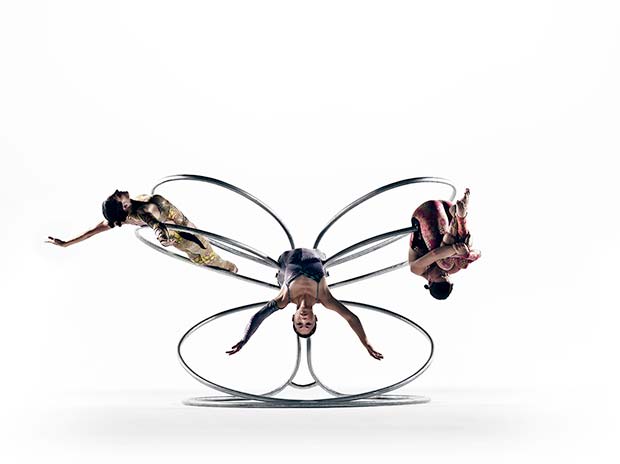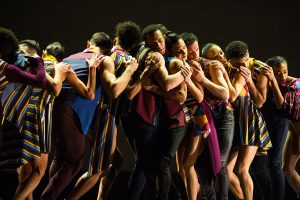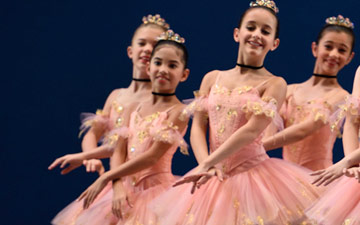
© RJ Muna. (Click image for larger version)
Yerba Buena Center for the Arts Transform Fest
Capacitor
Left To Her Own Devices: 20 Years of Sculpture in Motion
★★★✰✰
San Francisco, Yerba Buena Center for the Arts
17 May 2018
www.capacitor.org
www.ybca.org
Yerba Buena Center for the Arts’ Transform Fest is a new addition to the Bay Area’s creative ecosystem – two weeks of multi-disciplinary art and performance centered on a common question. For its inaugural edition last fall (the event is set to occur twice yearly), the festival asked musicians, visual artists, designers and choreographers to consider and reflect upon, “Why citizenship?” For its spring offering, Transform Fest brought a different puzzle to the table, “Where is our public imagination?” While this question seemed intended for the festival’s cohort of artists, it also really got me thinking.
Particularly about the term ‘public’, which, with so many possible meanings, felt somewhat nebulous here. There’s public as in shared, common experiences. Public as in community participation. Public access and availability. Public as in free to all (the festival does host some free events, but most have an admission fee). Later I decided that this ambiguity was likely the whole point. The festival had designed an open line of inquiry to kindle an array of interpretations and responses. Of course, I wondered what the dance/movement response might be. I missed the first week of the festival and Printz Dance Project’s presentation of GLASSlands. But on Thursday night in YBCA’s main theater space, caught Capacitor in Left To Her Own Devices: 20 Years of Sculpture in Motion.
Artistic Director and Founder Jodi Lomask describes Capacitor as a “dance, cirque, sculpture company that often works with scientists to create shows and installations about the natural world.” I’d only seen the company once before -2014’s Synaptic Motion, which took a neurological look at the creative process. Devices afforded a perfect opportunity to get better acquainted with this unique San Francisco-based company. A retrospective divided into two forty-five minute halves, the program excerpted seven works created from 2000 to 2014. While I was more pulled to Act I than Act II, Devices was a thoroughly enjoyable evening at the theater. And back to Transform Fest’s spring 2018 theme, it was indeed a shared experience of distinct imagination, a conversation between choreography, aerial arts, apparatus and sculptural structures.

© Marty Sohl. (Click image for larger version)
Every excerpt in Devices contained many internal scenes, each flowing directly into the next without a break. This provided a nice continuity, though it also made it a little challenging to discern where one excerpt ended and the next one began. The program listed them in order with a brief description, which was helpful, but there was still a little guesswork required.
The first excerpt (from 2000’s Within Outer Spaces) was all about connection. Two dancers entered the space, wearing a rigging apparatus of bungee cords over their costumes. These flexible fibers joined their cores and torsos, like the bungee cords were an extension of the rib cage or the vertebrae. At first, they gently explored tension and suspension, slowly pulling away from each other, the cords stretching. As the duet continued, the intensity of movement and dynamics increased, but the connection remained steadfast and solid. A number of choreographic scenarios felt in play: the give and take of partnering, the importance of counterbalance, and the notion of distance. How far away can a dancer be from his/her partner while still maintaining connection? The connection continued in a subsequent scene, though now, two dancers were almost fused together. The pair navigated a Cunningham-inspired movement phrase in close quarters, their costume having a shared top. What happens to partnering and movement when there are imposed restrictions and spatial constraints?
2005’s Digging in the Dark took a deep dive into the circle. An open orb hung from the rafters. Four performers engaged with the structure – climbing onto it, sitting as it spun, cycling through aerial choreography within its arcs and curves. At the same time, movement phrases unfolded on the stage in circular patterns. And the notion of the circle found its way into solo work with monologues of arched arms and turning sequences. Here, two iterations of the same shape were being simultaneously expressed and contrasted: a) suspended in the air and b) on a traditional surface. Act I closed with a revisiting of Biome (2007). An insect colony invaded the space, members fighting and devouring each other. The atmosphere was vicious and primal as the cast flattened each other on the ground, choked their colleagues’ necks and savagely attacked shoulders and other extremities. The Capacitor ensemble embodied nature’s ferocity with impressive (and frightening!) accuracy.
With acrobatics and aerial phrases set within three spiraled metal structures, Act II had a solid start. The movement may have been abstract but choreographic investigation was definitely underway in this excerpt from 2009’s The Perfect Flower. The metal structures had upended the idea of where the ground and floor were, and instead, posited a different sense of surface for the choreography. Rather than hindering physicality, this led to new movement possibilities, including many inverted positions. Several other moments stood out in the second half. Initially the costumes for 2016’s When We Were Small appeared to have long trains. I was completely surprised as these trains morphed into weight-bearing structures. Suddenly the dancers were seated on regal thrones, totally supported by their own costuming. I was also intrigued by a later scene from this same work where pointe shoes were worn on the feet and on the hands. It gave a distinctly insect quality to the choreography. And in Devices’ final excerpt from Synaptic Motion, a flexible, three-dimensional polyhedron was lowered from the ceiling, which a soloist ascended like a trapeze. The structure expanded and folded as he stretched and contracted, like he and the shape had become one.
Though as a whole, the second half had too much contortion for me, heavy in three of the four excerpts. Don’t get me wrong. The physical feats were absolutely astounding. And the Capacitor artists weren’t just doing tricks. There was ample attention paid to the transitional pathways (how they got into the various positions). To me, those are often more, or at least as interesting as the final shapes in space. But with joints that appeared to dislocate and limbs that ended up pointing in shocking directions, I found the contortion really hard to watch. From the audience’s enthusiastic response, perhaps I was the only one that felt this way, but somehow I doubt it.

















You must be logged in to post a comment.